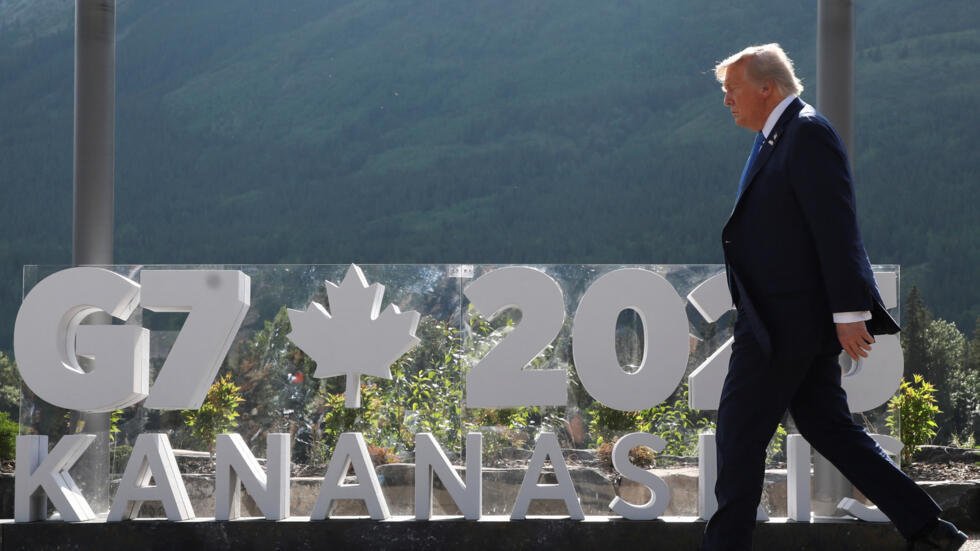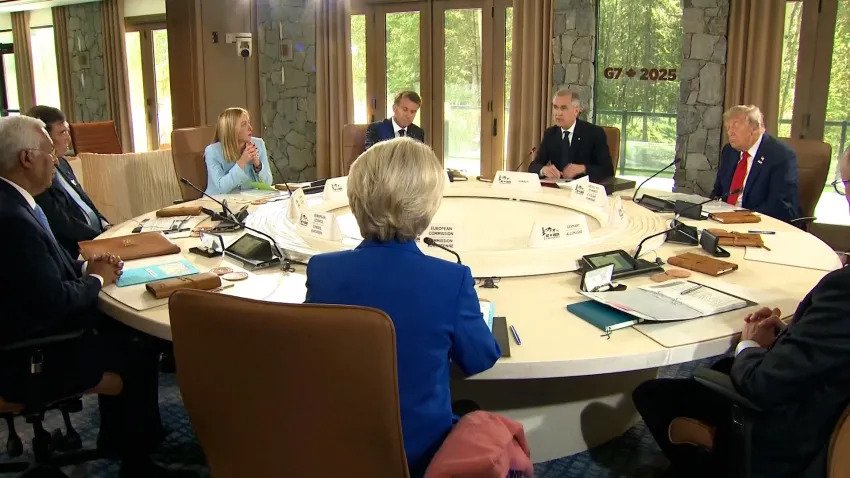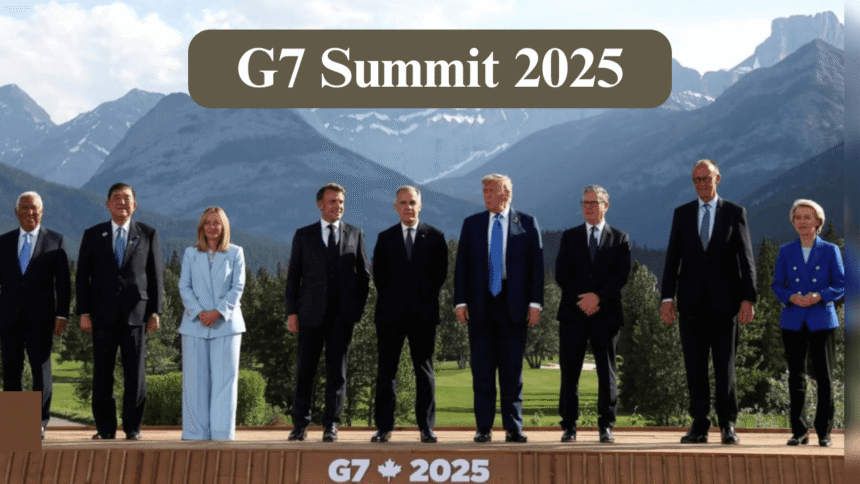The G7 Summit 2025 kicked off in the scenic yet strategically chosen location of Kananaskis, Alberta, where world leaders convened to address multiple intersecting global crises. From escalating Middle East tensions to climate emergencies and trade fragmentation, the summit has become a pivotal venue for high-stakes diplomacy. With rising geopolitical volatility, the G7 Summit 2025 is shaping up to be one of the most consequential gatherings in recent history.
The decision to host the summit in Canada’s rugged Rocky Mountains reflects the symbolic urgency of returning to nature and fundamental human cooperation. However, what was meant to be a calm setting for discussion quickly turned into a battleground of clashing priorities and fractured alliances. Kananaskis now sits at the center of some of the most critical debates of this decade.
Trump’s Early Exit Sends Shockwaves Through G7

On the second day of the G7 Summit 2025, former U.S. President Donald Trump stunned fellow leaders by abruptly leaving the summit, citing the need to respond to the escalating Iran-Israel conflict. His departure has thrown a wrench into ongoing negotiations and weakened consensus around key international decisions. Leaders from France, Germany, and the UK expressed concern that unity within the G7 may be deteriorating at the very moment when collective leadership is most essential.
The unexpected exit caused delays in drafting a unified response to the crisis. Several key proposals, including joint sanctions on rogue states and commitments to defend democratic allies, have now been pushed into uncertainty. Trump’s exit has also left his own delegation scrambling to clarify U.S. positions on energy, defense, and multilateral agreements.
Ukraine, Gaza, and the Middle East Dominate the Agenda
Although originally intended to focus on technology cooperation, sustainable development, and economic recovery, the summit’s agenda has been heavily overtaken by global security concerns. Ukrainian President Volodymyr Zelenskiy made an urgent appeal to G7 leaders, stressing the need for continued military and financial support in light of renewed Russian offensives. At the same time, the war in Gaza and the widening conflict between Israel and Iran have overshadowed almost every scheduled session.
Kananaskis has effectively become a war room. Defense ministers and foreign policy advisors have held back-to-back emergency meetings. The goal: to draft unified messages, avoid missteps, and show a stable front amid rapidly shifting alliances.
Leaders from Italy and Japan expressed concern that humanitarian crises are being overlooked in the rush to address military tactics. There were heated debates behind closed doors about arms shipments, ceasefire support, and international peacekeeping efforts.
India’s Global South Voice Gains Spotlight

Prime Minister Narendra Modi’s arrival was met with celebration by the Indian diaspora in Canada, but his role at the G7 Summit 2025 goes far beyond symbolic. India, although not a formal G7 member, has been invited as a special guest to represent Global South interests. Modi called for fairer trade practices, more inclusive climate policy, and representation for emerging economies in global decisions.
He urged G7 nations to move beyond rhetoric and commit real resources to education, food security, and pandemic preparedness in Africa, Southeast Asia, and Latin America. His speech garnered praise for shifting the focus toward development, even as tensions dominated the summit.
Climate, AI, and Trade: Secondary But Still Crucial
Despite being overshadowed by security issues, several landmark discussions have taken place in the background. Canada has pushed for an ambitious renewable energy pact, seeking to reduce G7 dependence on fossil fuels within the next decade. Germany and France have backed the proposal, while the U.S. delegation has remained cautious due to domestic concerns.

Artificial Intelligence was also on the table. The EU proposed a global code of ethics for AI, with strict limitations on surveillance and automated warfare. While initial reactions have been mixed, most leaders agreed that unchecked AI expansion poses existential risks.
On trade, the UK and Canada are spearheading a potential digital trade agreement aimed at easing data regulations across member countries. The idea has been supported in principle, but some nations are hesitant due to cybersecurity threats and national interest concerns.
Canada’s Role as Host: Neutral, Resilient, and Assertive
Hosting the G7 Summit 2025, Prime Minister Justin Trudeau has had to perform a delicate balancing act. He has sought to play peacemaker between diverging interests while also asserting Canada’s role as a serious player on climate, economic policy, and defense alignment. With wildfires and floods battering parts of the country, Trudeau used the summit to highlight climate change as not only an environmental threat but also a national security issue.
His government released a detailed report on how climate-driven disasters are impacting economic growth and infrastructure sustainability. Trudeau’s plea: “We cannot talk about the future of global stability without addressing the planet’s most urgent warning signs.”
Also read: Tehran Evacuation Urged by Trump
What’s Next for the G7?
The summit will close with a joint communiqué, though sources suggest it will feature softer language and vaguer commitments than originally planned. The absence of the U.S. in the final phase of negotiation is expected to dilute the power of the message. Nonetheless, leaders hope that even incremental agreements on sanctions, humanitarian aid, and green investments can make a difference.
The G7 Summit 2025 may not yield bold signatures or transformative treaties, but it has become a defining moment of global diplomacy in an age of compounding crises. From energy wars and cyber threats to climate collapse and regional instability, this summit has crystallized what world leaders are up against—and how fragile cooperation has become.
As the G7 Summit 2025 concludes, the world is left grappling with whether its most powerful democracies can truly rise to meet the era’s challenges. Kananaskis has become a symbol of both hope and hesitation—a mountain retreat echoing with promises, warnings, and the urgency of action. Whether those conversations lead to meaningful change or remain political theater will be seen in the coming months.

